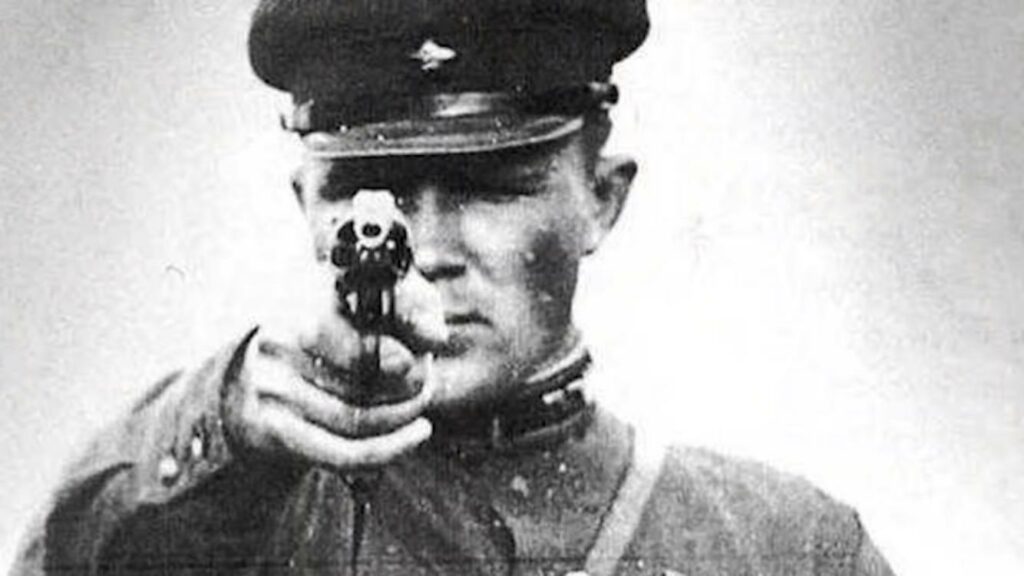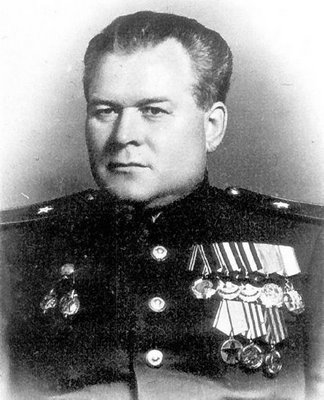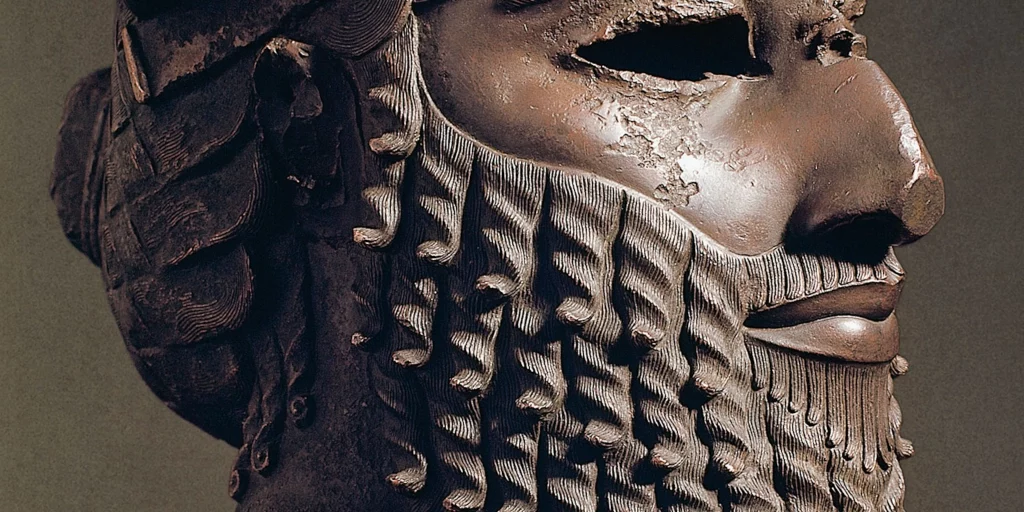Within one of history’s darkest eras, a figure emerged whose name would become synonymous with cruelty, efficiency, and death: Vasily Blokhin, the chief executioner of the Soviet Union.
Blokhin is widely acknowledged and infamous for the title of the most prolific executioner in recorded world history. And for good reason.
Amidst the shadowy corridors of Stalin’s regime, Blokhin held a chilling authority. He orchestrated mass executions with calculated precision. He carried out purges of party leadership and political prisoners alike.
His infamy reached its peak during the harrowing Katyn Massacre, where thousands of Polish prisoners met their tragic fate. Armed with his German-made pistol and a methodical approach, Vasily Blokhin personally killed thousands in relentless succession.
But behind this grim facade lies a tale that compels us to delve deeper into the complexities of history’s darkest hours.
Exploring Blokhin’s background, his techniques, and the controversies surrounding his legacy, we unravel a narrative that forces us to confront the unimaginable horrors perpetrated under the guise of Soviet power.
As we peer into the abyss, we are left to grapple with profound questions of morality, the consequences of unchecked authority, and the enduring scars left by one man’s role in a regime defined by oppression and fear.

Blokhin’s Early Life
Vasily Mikhailovich Blokhin was born on January 7, 1895, into a humble Soviet Union peasant family. He experienced a life trajectory that would lead him to the heart of Stalin’s reign.
Blokhin served in the Imperial Russian Army during World War I. His path took a decisive turn as he joined the Russian Communist Party and the Soviet secret police agency known as the Cheka in March 1921.
Even though historical records about his early life are scarce, his reputation began to take shape. He showcased both his brutal nature and his proficiency in “black work.”
Joseph Stalin recognized Blokhin’s skills in what he termed “wetwork.” This referred to covert activities like assassinations, torture, intimidation, and execution. This swiftly elevated him through the ranks.
Within a mere six years, by 1926, Blokhin assumed leadership of a small specialized unit within the NKVD. This was called the Kommandatura Branch. It was purposefully established by Stalin for these “wetwork” operations.
They were located at the infamous Lubyanka in Moscow. This elite branch was made up of individuals personally approved by Stalin and was directly answerable to him.
In this manner, Vasily Blokhin’s early life and career laid the foundation for what was to come. It set the stage for his dark and brutal role.
The NKVD and the Great Purge
Now, what was the NKVD?
The NKVD was established in 1917 as the NKVD of the Russian Soviet Federative Socialist Republic. This agency initially focused on regular police work and overseeing prisons and labor camps.
After a period of disbandment in 1930, it was reinstated in 1934 as an all-union commissariat.
During its existence, the NKVD held a monopoly over law enforcement activities. It encompassed both public order tasks and secret police operations.
However, the NKVD gained notoriety for its role in political repression. Particularly during the Great Purge under Joseph Stalin’s regime.

The NKVD was led by figures like Genrikh Yagoda, Nikolai Yezhov, and Lavrentiy Beria. They carried out mass extrajudicial executions, administered the Gulag system of forced labor camps, and repressed the wealthier peasantry.
It was responsible for safeguarding borders, espionage, and enforcing Soviet policies abroad. They crushed any opposition through brutal means, such as the repression and massacres in Poland.
The Great Purge, which it had a heavy hand in, occurred from 1936 to 1938. It aimed to consolidate Stalin’s power by eliminating rivals within the Communist Party and the state.
The purges expanded to encompass party officials, military leaders, and civilians. This led to widespread fear, imprisonment, torture, and arbitrary executions, solidifying control through a reign of terror.
In all this, one rising comrade, Vasily Blokhin, would have an outsized role.
The Katyn Massacre
Vasily Blokhin was the official executioner of the NKVD. He became infamous for his role in one event in particular: the Katyn Massacre.
In April 1940, he orchestrated the shooting execution of approximately 7,000 Polish officers and prisoners held in the Ostashkov camp.
Blokhin’s involvement in the mass killings was undeniable. He received direct orders by name. These were assigned to him by NKVD Chief Lavrentiy Beria, and sanctioned by Stalin himself.
With meticulous planning, Blokhin established an efficient execution process. Prisoners were individually identified in a small antechamber before being handcuffed and led to the execution room.
Armed with a German pocket pistol – a Walther Model 2 .25 ACP – Blokhin, dressed in a leather apron, hat, and gloves, shot each prisoner in the base of the skull without any formalities.
To ensure reliability, he carried a briefcase filled with his own Walther pistols. The executions took place at night. They were very hidden from public view. The bodies were transported to Mednoye for disposal in trenches.
Vasily Blokhin and his team operated tirelessly for 10 hours each night. Blokhin shot one prisoner approximately every three minutes.
His efficient methods earned him personal recognition from Stalin. He received the Order of the Red Banner. He would become the Guinness world record holder for ‘Most Prolific Official Executioner.’
The Katyn Massacre stands as a chilling testament to the depths of human cruelty and the tragic events that unfolded during that dark period.
Stripped of Rank and Retired
Following the death of Joseph Stalin in March 1953, Vasily Blokhin was forcibly retired from his position as the NKVD’s chief executioner.
Despite this, his “irreproachable service” was publicly acknowledged by Lavrentiy Beria upon his departure. However, during the de-Stalinization period under Nikita Khrushchev, Blokhin’s rank was stripped from him. This reflected the changing political climate.
By the time of his retirement, Blokhin was already grappling with alcoholism and mental illness.
He passed away on 3 February 1955 at the age of 60. While the official cause of death was listed as suicide, his personnel files indicated that he died from a heart attack.
He was laid to rest in 1955 at the Novodevichy Cemetery.
In the late 1960s, after the end of the Khrushchev era, Blokhin’s titles and medals were posthumously returned to him. He was rehabilitated by the state.
It is worth noting that, as others have said, while Vasily Blokhin found a final resting place the same cannot be said for the thousands of people he executed during his tenure as the most prolific executioner in history.
References
“Most Prolific Official Executioner.” Guinness World Records. Accessed June 10, 2023. https://www.guinnessworldrecords.com/world-records/90113-most-prolific-official-executioner.
“Vasily Blokhin Biography – Soviet Russian Soldier and Executioner (1895–1955).” Pantheon. Accessed June 10, 2023. https://pantheon.world/profile/person/Vasily_Blokhin.
“Vasily Blokhin, History’s Most Prolific Executioner.” Rare Historical Photos, November 23, 2021. https://rarehistoricalphotos.com/vasily-blokhin-executioner/.

